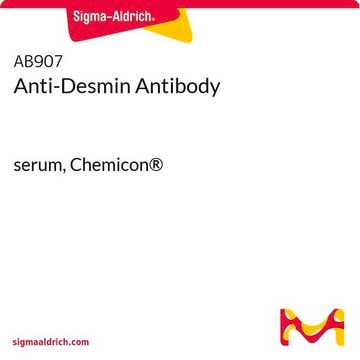추천 제품
생물학적 소스
bovine skin
유형
Type B
형태
powder
기술
ELISA: suitable
cell culture | mammalian: suitable
immunocytochemistry: suitable
western blot: suitable
유사한 제품을 찾으십니까? 방문 제품 비교 안내
애플리케이션
Gelatin has various industrial applications such as stabilizer, thickener, and texturizer in foods. It is also used in the manufacture of rubber substitutes, adhesives, cements, lithographic and printing inks, plastic compounds, artificial silk, photographic plates and films, matches, and light filters for mercury lamps. In the pharmaceutical industry, gelatin is used as a suspending agent, encapsulating agent and tablet binder. In veterinary applications it is used as a plasma expander and hemostatic sponge.
This product is recommended for use as a cell culture substratum at 1-5 μg/cm2 or 0.5-50 μg/mL. The optimal concentration does depend on cell type as well as the application and research objectives.
Gelatin was used for coating cell culture to improve attachment of cells, in addition to PCR to help stabilize Taq DNA. It was used as a blocking reagent in Western blotting, ELISA, and immunohistochemistry. Gelatin can also be used as a component of media for species differentiation in bacteriology. Gelatin is a biocompatible polymer and has been used as delivery vehicle for the release of bioactive compounds and in the generation of scaffolds for engineering applications.
It was used to test keratinocyte growth factor stimulation of gelatinase (matrix metalloproteinase-9) and plasminogen activator in histiotypic epithelial cell culture. It was also used to study the changes in the nucleolar organizer regions in the tuberomammillar region after dehydration.
Gelatin was used for coating cell culture to improve attachment of cells, in addition to PCR to help stabilize Taq DNA. It was used as a blocking reagent in Western blotting, ELISA, and immunohistochemistry. Gelatin can also be used as a component of media for species differentiation in bacteriology. Gelatin is a biocompatible polymer and has been used as delivery vehicle for the release of bioactive compounds and in the generation of scaffolds for engineering applications.
It was used to test keratinocyte growth factor stimulation of gelatinase (matrix metalloproteinase-9) and plasminogen activator in histiotypic epithelial cell culture. It was also used to study the changes in the nucleolar organizer regions in the tuberomammillar region after dehydration.
성분
Gelatin is a heterogeneous mixture of water-soluble proteins of high average molecular masses, present in collagen. Proteins are extracted by boiling the relevant skin, tendons, ligaments, bones, etc. in water. Type A gelatin is derived from acid-cured tissue. Type B is derived from lime-cured tissue.
주의사항
Dry gelatin, when stored in airtight containers at room temperature, will remain unchanged for many years. When heated at 100°C in the presence of air, it swells becomes soft and disintegrates to a carbonaceous mass with evolution of pyridine bases and ammonia.
제조 메모
This product is derived from bovine skin. Gelatin is soluble in hot than in cold water. It is practically insoluble in most organic solvents such as alcohol, chloroform, carbon disulfide, carbon tetrachloride, ether, benzene, acetone, and oils. The Bloom number, determined by the Bloom gelometer, is an indication of the strength of a gel formed from a solution of the known concentration. The Bloom number is proportional to the average molecular mass. Bloom numbers of porcine skin Gelatin vary from 90 to 300 g. This product has a gel strength of 50−120.
Storage Class Code
11 - Combustible Solids
WGK
nwg
Flash Point (°F)
Not applicable
Flash Point (°C)
Not applicable
개인 보호 장비
Eyeshields, Gloves, type N95 (US)
시험 성적서(COA)
제품의 로트/배치 번호를 입력하여 시험 성적서(COA)을 검색하십시오. 로트 및 배치 번호는 제품 라벨에 있는 ‘로트’ 또는 ‘배치’라는 용어 뒤에서 찾을 수 있습니다.
이미 열람한 고객
E E Putnins et al.
The Journal of investigative dermatology, 104(6), 989-994 (1995-06-01)
The purpose of this investigation was to examine the role that keratinocyte growth factor (KGF) plays in the control of matrix-degrading protease activity in epithelial cells. The culture conditions had a significant effect on cellular responses to the growth factor.
PCR Primer
C. Dieffenbach and G. S. Dveksler
PCR Primer: A Laboratory Manual (1955)
Chang-Sheng Wang et al.
Carbohydrate polymers, 175, 484-492 (2017-09-18)
Gelatin B and xanthan gum aqueous mixtures (GB/XG, (0.2-2%)/0.2% w/v) exhibit enhanced gelling properties compared to their pure component solutions at similar compositions. The mixed gels comprise co-localized networks of GB and XG-rich domains. Our results show that these domains
Pavel Khramtsov et al.
International journal of pharmaceutics, 599, 120422-120422 (2021-03-02)
The desolvation technique is one of the most popular methods for preparing protein nanoparticles for medicine, biotechnology, and food applications. We fabricated 11 batches of BSA nanoparticles and 2 batches of gelatin nanoparticles by desolvation method. BSA nanoparticles from 2
Pavel Khramtsov et al.
Pharmaceutics, 13(10) (2021-10-24)
Gelatin nanoparticles found numerous applications in drug delivery, bioimaging, immunotherapy, and vaccine development as well as in biotechnology and food science. Synthesis of gelatin nanoparticles is usually made by a two-step desolvation method, which, despite providing stable and homogeneous nanoparticles
자사의 과학자팀은 생명 과학, 재료 과학, 화학 합성, 크로마토그래피, 분석 및 기타 많은 영역을 포함한 모든 과학 분야에 경험이 있습니다..
고객지원팀으로 연락바랍니다.










